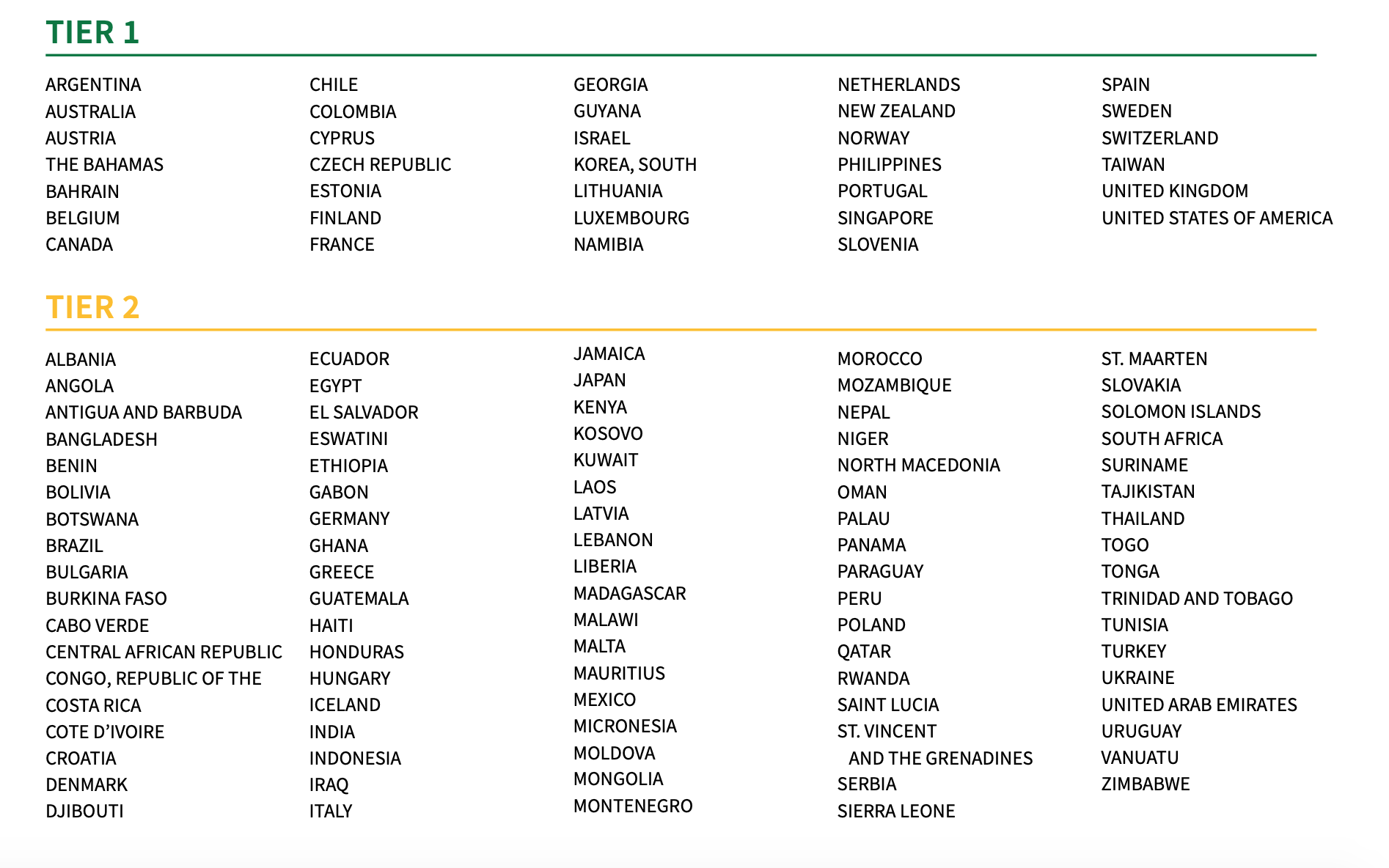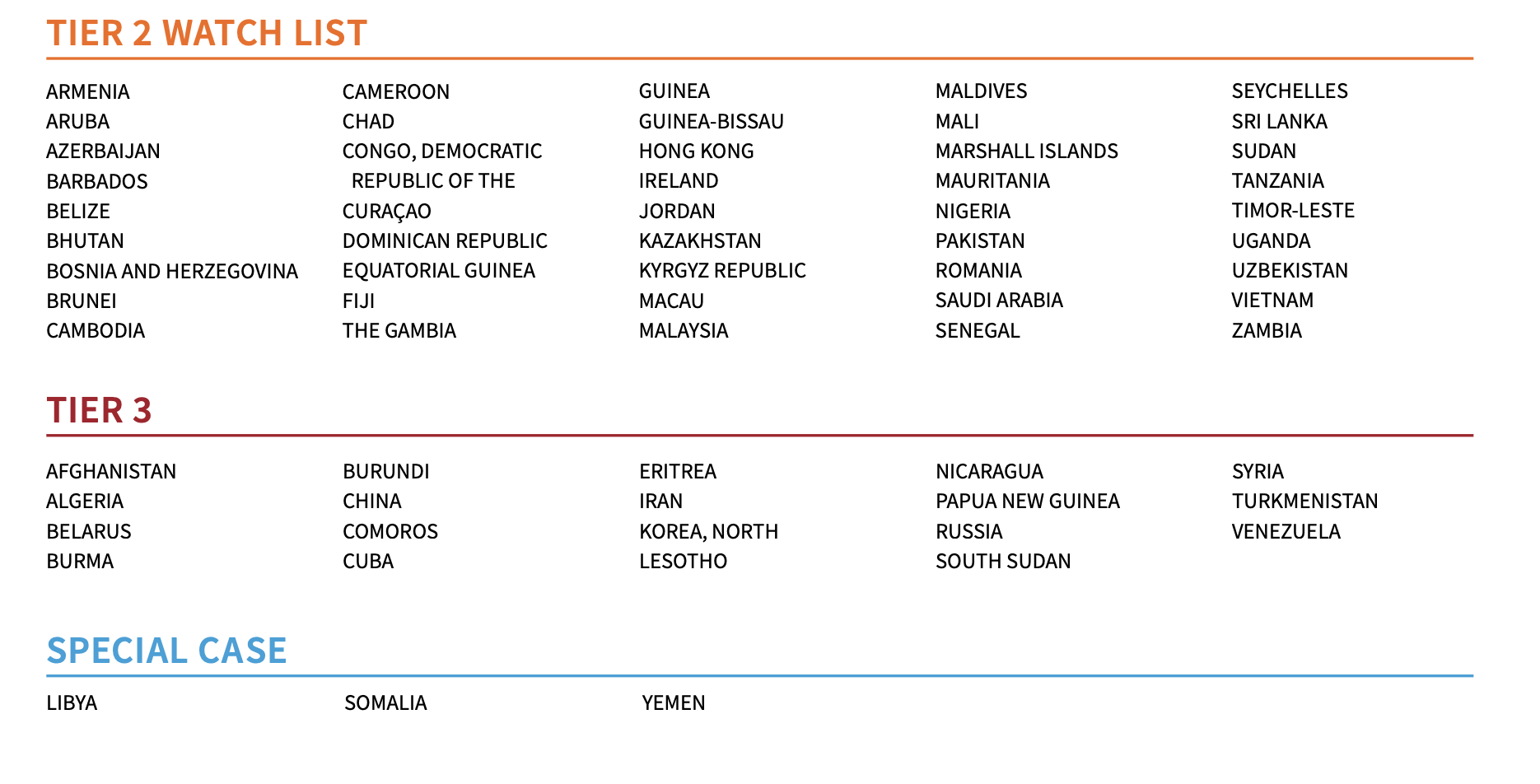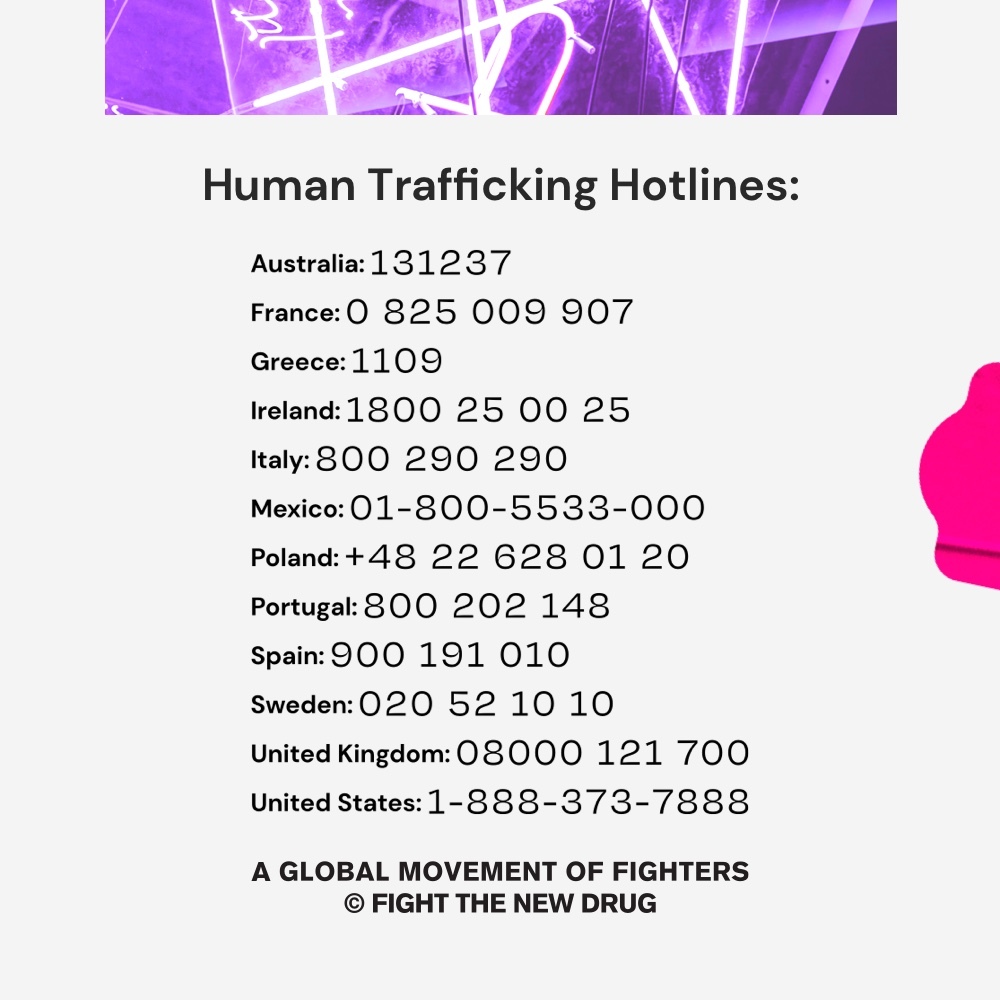Disclaimer: Fight the New Drug is a non-religious and non-legislative awareness and education organization. Some of the issues discussed in the following article are legislatively-affiliated. Including links and discussions about these legislative matters does not constitute an endorsement by Fight the New Drug. Though our organization is non-legislative, we do fully support the regulation of already illegal forms of pornography and sexual exploitation, including the fight against sex trafficking.
Did you know that until the year 2000, human trafficking technically wasn’t a federal crime in the United States?
Shocking, yes, but true.
That’s the year the Trafficking Victims Protection Act was passed, making human trafficking a federal crime.
Although FTND is not a legislative organization, this year’s annual Trafficking in Persons Report as mandated by the TVPA is important to discuss—particularly as it relates to global efforts to combat human trafficking and the biggest consumers of commercial sex.
Related: Why Fighting Sex Trafficking Needs To Include Fighting Porn
How the TIP Report is used in the fight against human trafficking
The TVPA defines sex trafficking as a situation in which “a commercial sex act is induced by force, fraud, or coercion, or in which the person induced to perform such an act has not attained 18 years of age.”
Human trafficking thrives where people in vulnerable populations or circumstances can be preyed upon by those who seek to profit from their exploitation—be it monetarily, socially, or politically.
Related: How The Porn Industry Capitalizes Off Of Racism And Racist Stereotypes
There are an estimated 4.8 million victims of human sex trafficking globally, with children making up around 21% of victims. An estimated 99% of global sex trafficking victims are women and girls, and the average age of a sex trafficked child is 15-years-old. And yet, some governments still deny the existence of human trafficking.
When the United States Congress passed the Trafficking Victims Protection Act 20 years ago, a national framework for the federal response to human trafficking was established based on three categories—prevention, prosecution, and protection.
The goal of the TIP Report is to raise awareness, spark dialogue, stir action, hold governments accountable for their contribution and response to human trafficking, and aid them in their efforts to combat it.
Tier classifications in the TIP Report
Each year, countries are ranked on a scale of four tiers based on the extent to which their efforts meet the TVPA’s minimum standards for eliminating human trafficking.
Related: How To Report Human Trafficking When You See Something Suspicious
What’s considered “sufficient effort” can include enacting and implementing laws, criminal penalties, victim identification, government support to provide victims access to health care, counseling, and shelter, victim protection efforts and legal assistance, victim reintegration, and measures to prevent human trafficking and reduce the demand for commercial sex.
Tier 1. Countries with governments that meet TVPA minimum standards. Although this is the highest-ranking, this doesn’t mean countries here have no human trafficking problem or are doing enough to address it.
Tier 2. Countries with governments that are making significant efforts to comply with TVPA’s minimum standards but don’t yet fully meet them.
Tier 2 Watch List. Countries with governments that don’t meet TVPA minimum standards and for which “the estimated number of victims of severe forms of trafficking is very significant or is significantly increasing and the country is not taking proportional concrete actions.”
Any country ranked at Tier 2 Watch List for two consecutive years without demonstrating improvement is automatically downgraded to Tier 3.
Tier 3. Countries with governments that don’t meet TVPA minimum standards and are not making significant efforts to do so. May also include countries where the origin, transit, or destination of trafficking is severe, the government has been complicit with severe forms of trafficking, is not devoting sufficient budgetary resources to investigate, prosecute, and convict human traffickers or provide restitution or protection for victims, and adequate prevention measures are not being taken.
Tier 3 countries face potential restrictions including the loss of certain types of non-humanitarian, non-trade-related U.S. assistance.
Related: 6 Marginalized & Vulnerable Groups Of People Porn Has No Problem Fetishizing
TIER PLACEMENTS
Here’s a snapshot of what the TIP Report revealed this year.
Global Law Enforcement Data

Western Hemisphere Law Enforcement Data

Global Tier Placements


***For a detailed breakdown of each region and country including a justification for tier rankings, check out the Country Narratives in the TIP Report.
How is the U.S. doing according to the TIP report?
The United States has been ranked Tier 1 since 2013 and did make some impactful efforts to fight human trafficking, but there’s still significant room for improvement—especialy given that the U.S. is still one of the biggest consumers of commercial sex.
Related: 10 Surprising Facts About Human Trafficking In The U.S.
The U.S. prosecuted fewer cases and secured convictions against fewer traffickers this fiscal year compared to last. And while the government did increase funding for trafficking victim assistance from the previous year, the number of victims served actually decreased.
Human traffickers continue to exploit both domestic and foreign national victims in the United States, and traffickers exploit victims from the United States abroad. Some U.S. citizens continued engaging in child sex tourism in foreign countries.
Human trafficking cases have been reported in all 50 states and the District of Columbia. Individuals who entered the United States with and without legal status have been identified as trafficking victims.
Victims originate from almost every region of the world. The top three countries of origin of federally identified victims were the United States, Mexico, and Honduras.
Related: 14-Year-Old Trafficking Victim Took Down California Trafficking Ring With One Text
Among those most vulnerable to human trafficking are children in foster care, runaway and homeless youth, unaccompanied foreign national children, individuals seeking asylum, individuals with substance use issues, persons with limited English proficiency, persons with disabilities, LGBTQ+ individuals, and victims of intimate partner violence or domestic violence.
Here are some of the successes in the U.S. for the last fiscal year:
- Efforts to find children missing from foster care led to the identification of more than 40 missing children, five arrests, and four human trafficking investigations.
- Survivors took an active role in training victim-centered, trauma-informed approaches to law enforcement and prosecutors.
- The HHS assisted 228 foreign national child victims of trafficking, including 69 new enrollments, through its Unaccompanied Refugee Minors Program, compared to 199 foreign national child victims of trafficking the previous year.
- The National Human Trafficking Hotline received 136,990 calls, texts, chats, online tips, and emails, identified 11,852 potential human trafficking cases, and provided resources and referrals to 3,828 potential victims. The hotline also received information on 4,692 potential traffickers and 1,849 types of businesses facilitating human trafficking. Of the potential human trafficking cases identified, the hotline reported 3,599 potential cases to law enforcement and received information that at least 1,086 investigations were opened as a result. More than 10,300 signals, which included calls, texts, and web chats, came from individuals who identified themselves as potential victims of trafficking seeking help.
- Eleven defendants were convicted of federal child sex tourism charges during the fiscal year, compared to three in the year prior.
And here are some of the prioritized recommendations as stated in the TIP report:
- Accessibility and diversity of healthcare/resources for survivors.
- More focus on victim-centered, trauma-informed care.
- Availability of culturally and linguistically appropriate services.
- Better understanding the intersection of human trafficking and addiction.
- Increase the number of trafficking investigations and prosecutions.
- Increase and diversity efforts to identify potential trafficking victims among vulnerable populations.
- Increase access to victim services for men, boys, and LGBTQ+ individuals.
- Improve access to stable housing for all victims.
- Implement policies not to prosecute victims for the unlawful acts their traffickers compelled them to commit.
- Implement early intervention services to reduce vulnerabilities of marginalized and disadvantaged communities often targeted by traffickers.
- Increase survivor engagement when forming policies, programs, and trainings.
- Expand services for unaccompanied foreign national children.
- Improvements to education services, including financial education and resources, job training, and job placement for survivors.
- Strengthen efforts to reduce the demand for commercial sex acts.
Stopping the demand for commercial sex includes porn
There’s clearly still a long way to go when it comes to addressing this complex issue.
Related: Why Do Some People Fight Against Sex Trafficking But Unconditionally Support Porn?
The U.S. remains one of the biggest consumers of commercial sex, and we can’t have effective conversations about the demand for exploitation without addressing one of its contributing factors: porn.
Consider basic economics—the supply for any product simply wouldn’t exist if there wasn’t a demand for it. Think toilet paper, for example. In years past, the average person probably had no problem purchasing some when needed, but given the rise in demand amidst a global pandemic, many stores couldn’t keep TP stocked in the months of March – May this year. As a result, companies are mass producing it in an effort to meet the demand.
Related: How COVID-19 Has Worsened The Existing Issue Of Human Trafficking
People aren’t products, bodies aren’t commodities, and yet many people in the world consume them as such—and this same principle of supply and demand applies. The demand for sex trafficking is fueled by porn consumption. And since the U.S. consumes more porn than any country in the world, it’s no wonder sex trafficking is a growing problem.
There are countless undeniable connections between porn and sex trafficking. Like the fact that exposure to pornography has been shown to make viewers less compassionate towards victims or sexual violence and exploitation, or that some consumers seek to act out violent fetishes they view in porn on real people. There’s also the fact that traffickers and sex buyers get ideas from porn—using it to groom their victims or show what they’ll be expected to do—turning porn fantasies into a horrific reality for victims. Mainstream porn sties are filled with actual footage of the rape of sex trafficking victims, no matter how “consensual” it may appear. And children growing up in homes where pornography is regularly consumed are far more likely to be trafficked at some point in their life.
Related: Force, Fraud, And Coercion: Uncovering When Sex Trafficking And Porn Production Overlap
Bottom line, sex trafficking and porn are sometimes one and the same, and they are so interlinked, you can’t fight one without fighting the other.
If we’re going to talk about sex trafficking, porn has to be included in the conversation.





